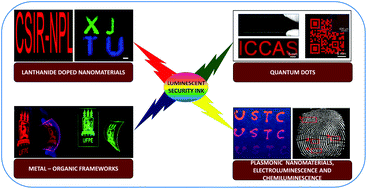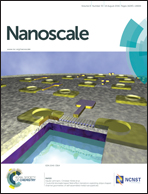Future prospects of luminescent nanomaterial based security inks: from synthesis to anti-counterfeiting applications
Abstract
Counterfeiting of valuable documents, currency and branded products is a challenging problem that has serious economic, security and health ramifications for governments, businesses and consumers all over the world. It is estimated that counterfeiting represents a multi-billion dollar underground economy with counterfeit products being produced on a large scale every year. Counterfeiting is an increasingly high-tech crime and calls for high-tech solutions to prevent and deter the acts of counterfeiting. The present review briefly outlines and addresses the key challenges in this area, including the above mentioned concerns for anti-counterfeiting applications. This article describes a unique combination of all possible kinds of security ink formulations based on lanthanide doped luminescent nanomaterials, quantum dots (semiconductor and carbon based), metal organic frameworks as well as plasmonic nanomaterials for their possible use in anti-counterfeiting applications. Moreover, in this review, we have briefly discussed and described the historical background of luminescent nanomaterials, basic concepts and detailed synthesis methods along with their characterization. Furthermore, we have also discussed the methods adopted for the fabrication and design of luminescent security inks, various security printing techniques and their anti-counterfeiting applications.


 Please wait while we load your content...
Please wait while we load your content...